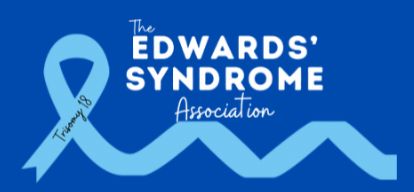Cerebral Palsy
Cerebral Palsy, commonly known as CP, is a complex group of neurological disorders that can considerably impact an individual’s ability to control their movements, maintain balance, and posture. The term “cerebral” refers to the affected areas of the brain, which are responsible for movement control and coordination.
People with CP can experience a range of symptoms, including exaggerated movements, floppy or rigid limbs, and involuntary movements. A similar set of clinical symptoms is exhibited by individuals with Trisomy 18. However, due to the diagnosis of CP, our children get access to specialized care through Cerebral Palsy clinics at Children’s Hospitals, which provide a diverse range of services such as physiotherapy, occupational therapy, assistive devices, and surgery, among others. Therefore, this umbrella diagnosis can offer numerous benefits and support to our children, enabling them to lead their lives to the fullest.
DIfferent Types:
Edwards’ Syndrome, also known as Trisomy 18, is a condition that affects children and leads to various types of Cerebral Palsy (CP). CP is a neurological disorder that impacts muscle control and movement. The different types of CP that are prevalent in children with Edwards’ Syndrome are Quadriplegia, Diplegia, and Hemiplegia. Quadriplegia affects all the muscles in a child’s body, whereas Diplegia mainly impacts the legs. Hemiplegia affects one side of the body and can cause issues with motor coordination. These types of CP can cause discomfort, difficulty with daily activities, and potential developmental delays. It is crucial to consult medical professionals if you suspect that your child is experiencing any symptoms. With proper care, support, and treatment, children with Edwards’ Syndrome-related Cerebral Palsy can lead fulfilling lives.
Classification Based on Location of Brain Injury
- Pyramidal (Spastic) CP – Most Common Type affecting about 80% of Children. Their muscles are too tight and limit movements.
- Extrapyramidal CP – This type affects about 10% of Children. They have abnormally low muscle tone which makes their muscles weak. They tend to have involuntary movements, the various type of movement are:
- Athetosis – movements slow and writhing
- Ataxia – movements are unsteady, shaky and lack coordination
- Dystonia – movements are slow, rhythmic and twisting
- Chorea – The movements are abrupt, quick and jerky
3. Mixed-Type of CP – This type affects about 10% of Children. They have both spastic and involuntary movements.
Gross Motor Function Classification System
The above-mentioned scale is an incredible tool that specialists and therapists use to evaluate children’s specific movement needs. It’s worth noting that this scale has been designed after rigorous research and analysis, ensuring that it’s accurate and effective. The range of this movement aid scale varies from Level 1 to Level 5, with Level 1 indicating the least affected and Level 5 indicating the most affected. This scale is incredibly helpful in that it provides a stepwise assessment, allowing for personalized attention and care. Any child between the ages of 6-12 can benefit from this scale assessment, with specialists tailoring their recommendations and interventions to meet each child’s specific needs. As a result, this scale is an essential tool in the arsenal of any therapist or specialist who works with children, ensuring optimal patient care and individualized treatment plans.
Resources:
- Cerebral Palsy Foundation – https://cpresource.org/ Organization that focuses on Education, Research and Changing the Views
- Cerebral Palsy Guide – https://www.cerebralpalsyguide.com/cerebral-palsy/ – Founded to Educate families and raise awareness and support for CP
- Cerebral Palsy Guidance – https://www.cerebralpalsyguidance.com/cerebral-palsy/ – Information about CP and Nationwide Financial Assistance
- Teaching Motor Skills to Children with CP – https://a.co/d/fKmJLE7 – A Physical Therapy Resource Book for Children with Cerebral Palsy
- Cerebral Palsy: A Complete Guide for Caregiving – https://a.co/d/6hQlNbs – A Caregivers Guide Book for Cerebral Palsy
- Pediatric Exercise Handbook: A developmental How-to for parents and clinicians – https://a.co/d/4IOQZ3C – A Physical Therapy Exercise Handbook
